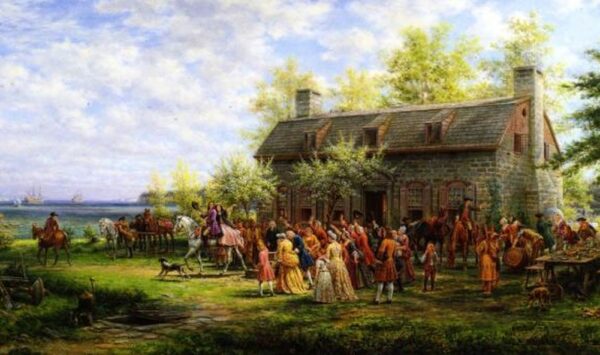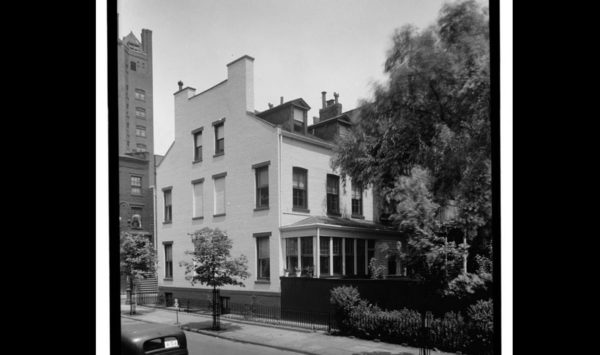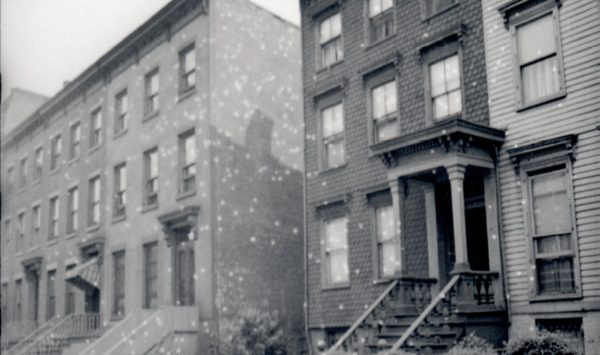THE SALE OF FORT GREENE (1798)

******************************************************************************************************************************** Brownstone Detectives investigates the history of our clients’ homes. The story you are about to read was composed from research conducted in the course of one of those investigations. Do you know the history of YOUR house? ******************************************************************************************************************************** In 1798, the farm that had been in the Couwenhoven family for 100 years was being foreclosed on. John Remsen Couwenhoven had creditors to pay, and the land he had inherited about 20 years earlier from his brother, Rem, was what the judge knew would pay them back. Thus he was ordered to place his land into the hands of a number of trustees. They would take over the responsibility of cataloging all that he owned, setting prices on all of his personal and real property, publicly listing it for sale, and then following through with the land’s conveyance. On the set date in May, the Couwenhoven farm was swarming with activity, as men – and women – of every Dutch family, it seemed, determined what of Couwenhoen’s possessions they wanted. The squeals of hogs, the murmurs of numerous discussions, the sounds of everyday life on a farm must have been omnipresent as potential purchasers walked the farm and evaluated the many items for sale. And when that sale began, there seemed to be a buyer for every item. Samuel Schenck got a “Frame for a Waggon,” Simon Bergen got a “grindstone,” Barent Lefferts got a “Flax Mill,” Mr. Grant got Couwenhoven’s ladders, and a Mr. Hall got a “Grain Rake.” […]
A WILLOW GREW IN BROOKLYN HEIGHTS (1938)

******************************************************************************************************************************** Brownstone Detectives investigates the history of our clients’ homes. The story you are about to read was composed from research conducted in the course of one of those investigations. Do you know the history of YOUR house? ******************************************************************************************************************************** (In September of 1938, one of the deadliest and most destructive tropical cyclones to hit Long Island, New York, “The Long Island Express,” wrecked havoc on the peninsula and much of Brooklyn, as well. In addition to killing 682 people and damaging or destroying more than 57,000 homes (causing property losses of $4.7 billion in today’s dollars), the hurricane knocked down innumerable trees. One of the more famous trees to lose its life in that storm was a willow tree of unknown age which sat in the yard of Brooklyn Heights’s No. 57 Willow Street. Some claimed that it was this tree that gave the street its name.) *********************************************************************************************** From the Brooklyn Daily Eagle, Mon., 31 October 1938 (by columnist Maxwell Hamilton): “At the rate timber fell around us during the Hollywood hurricane last September (ed.’s note-“The Long Island Express” was one of the deadliest and most destructive cyclones to strike Long Island, New York), it would have been a flagrant case of playing favorites to select any one particular crashing tree and honor it with front-page billing. And yet, if the evidence gathered by our secret agents is worth any salt at all, it would appear that we all missed up on one leafy upheaval that was genuine news. We […]
THE “GOODFELLAS” OF CUMBERLAND STREET

One of the Brownstone Detectives’ first House History Books, No. 231 Cumberland Street: The Story of a House, tells the story of an 1852 antebellum frame home just steps from Fort Greene Park. It’s an action-packed tome, replete with treachery, “poudrette,” “small art,” SROs, and the gangland figures from “Goodfellas.” Here is a brief timeline of the history of this single landmarked property, matched up with “spreads” from the book: THE HISTORY OF A BROOKLYN HOUSE The land beneath which No. 231 would someday rise, started out as a tobacco farm owned by the first Italian immigrant to New York, Pietre Cesare Alberti. The farmland would eventually be built upon in 1851-2, when builder John Ross constructed a row of three homes there. First owned by a woman with a tragic history, a melodrama involving treachery, another man, and an infant daughter – which became the gossip of the newspapers of the time – No. 231 was rented out throughout the the 1850s and 1860s, in addition to many returning Civil War veterans, to merchants and their small families. One of those merchants featured prominently in the founding of the Lafayette Avenue Presbytery Church. Before this, however, he had begun his interesting career as a Night Soil Man – starting a company which, amongst other “agricultural” endeavors, collected human excrement from the backyard privvies of Brooklyn, selling this “compost” to Long Island farmers as the appropriately – if euphemistically – named “poudrette.” The property was then owned by an immigrant, […]